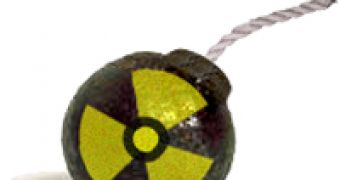After 9/11, people finally realized what terrorism is capable of and that terrorists would do anything to accomplish their plans. Correlate that with large amounts of missing nuclear fuel from the ex-soviet countries and you get nuclear terrorism. Most of the radioactive detection systems being currently used are present in ports and borders all around the world, but they could, in theory, miss the slight radioactive residues produced by radioactive materials.
Engineers from Purdue University are currently working on developing a cellphone network for detecting nuclear material or nuclear weapons and, if successful, it will eventually spawn the appearance of a wide network of telephones equipped with radiation detectors. The system could be designed to ignore false warnings such as those in the case of low radioactive emissions detected in the vicinity of hospitals which often use nuclear material for radio imaging.
Nevertheless, Purdue physicists are not the first ones to try to implement a system using cellular phones that detects and tracks radiation emissions. Andrew Longman had previously developed the software for the respective system and integrated it into telecommunication networks, with the help of Purdue researchers, to test it into an AT&T cellular phone network.
The system received a second wave of testing in November 2007, when a weak radiation source was placed in a unknown location in the Purdue campus. People walking randomly through the campus with cellphones having radiation detectors were able to make an accurate detection within 3.5 meters of the radiation source. Nuclear engineer Jere Jenkins ensures us that the test was a complete success and posed no danger to the participants, since the nuclear source had been sealed in a radiation container, thus the emitted radiation level was well under the biological safety limits.
The system makes an accurate detection with the help of a collection of multiple sensors, then combines that data to make a complete software analysis. The person carrying the cellular phone would in fact have no awareness that it is making a detection of a radioactive source, in order to prevent panic situations. Instead, the data would be send directly towards the data centers, informing the authorities on the radiation levels and the location where the source was detected, to take the appropriate action. Nonetheless, Purdue researchers argue that it might take some time before convincing cellular phone manufacturers to introduce the radiation detectors into their future telephone design.

 14 DAY TRIAL //
14 DAY TRIAL //